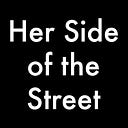Finding the Street in a smaller US town
I was living in Spain when I first had the chance to dive deeply into street photography. As a mother of two young kids, I had a miraculous amount of time on my hands and endless streets to wander, both in Spain and elsewhere. It was glorious: I had time to look at other people’s photography, time to play again and again with various camera settings. But mostly, I had time to wander and wander in the pedestrian filled, narrow and highly walkable streets, through richly shadowed neighborhoods, around textured and aged architecture. It was a great place to shoot — to learn, to see, to disappear behind my ex-pat lens.
And at first, it was a major set up for disappointment when I got back home. I could no longer rely on some of the more conventional street photography tropes: shadow lines, signage, frequent and funny juxtapositions, passionate interpersonal engagement. For me, shooting in my hometown — the small university mountain town of Missoula, Montana, pop. 70,000 — was a big shock psychologically and aesthetically.
Psychologically, shooting in my hometown was different in at least two major ways. Compared to my ex-pat life where everything was new and intense, my visual field felt dull and uninspiring. Nothing seemed compelling — so familiar, it was hard to see anything new. It was hard to frame what didn’t stand out; it was hard to know where to land my eyes, when the surface felt so bland. At the same time, I found it hard to drop into a place of really seeing: hustling with carpools, making school lunches, getting to work, walking the dog — I did not have as much emotional space or energy to remain curious as to what was in front of me.
Furthermore, in shooting at home, I can’t hide in my ex-pat anonymity. I can’t smile away my inability to speak the language or my failures to grasp nuance. Instead, in my daily shoots, I often run into people I know from other parts of my life — my work, at my children’s school, friendships forged outside the lens. As a consequence, in taking shots, I need to fight my place-specific, intuitive reserve and caution, as I am far more aware of the lasting impact my own framing may have on relationships in my social world.
Aesthetically, it was also incredibly disorienting. More specifically, as one who craves walking and observing, I found myself longing for pedestrian filled streets, for the spontaneous dynamics of conversation or interaction. In older cities of Europe, people walk and shop in a variety of stores and actually use parks for socializing. In the United States, especially in smaller towns, our culture is dramatically oriented towards cars, larger shopping complexes, bigger box stores — and there are simply not as many pedestrians.
Particularly in the West, where I live, the streets are also wide and the buildings relatively squat and rectangular. The gorgeous shadow lines of older European buildings are gone, as are the rich tones and faded colors of aged walls. Where Europe offers narrow streets that provide depth and layers, the streets of my hometown offer often harsh or more direct sunlight, flatter surfaces and more homogeneous building lines.
But as I settled in and rediscovered what I already knew, I found an entirely new and more minimal aesthetic that connected with my new landscape; a new set of slower stories that conveyed an arguably richer or more nuanced human experience at home. In many ways, the transition back forced me to become a more deliberate, thoughtful photographer. It forced me to examine why I take pictures, what I want to see and what I want to say. Less interested now in the one-off experience of a hit and run shot, I am delving more into the stories of my hometown, the histories and social layers of a place over time.
In the end, I have come to realize what is actually quite obvious: that insofar as human experience is fascinating and moving, so too will be the process of making images — no matter where I am and what street I walk. One just needs to be both humble enough and expansive enough to see what is there.

